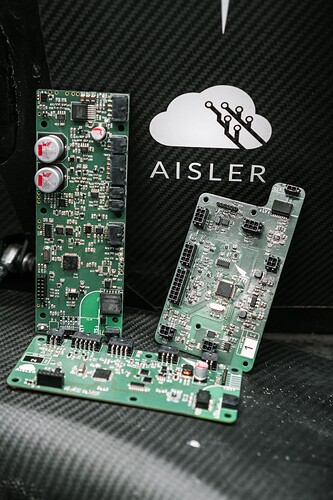Campus Tirol Motorsport is the Formula Student Team from Innsbruck. We build a new electric race car every year to compete in Formula Student Events against other university’s teams.
At the heart of any electric car’s powertrain is the battery pack. To achieve optimal efficiency and light weight, we decided to supply our race car with a 600 V accumulator that needs to reliably provide up to 72 kW to the wheel-mounted motors.
There are not many off-the-shelf solutions that comply with the rules for Formula Student cars and meet our performance criteria for high voltage battery packs. That’s why we decided to design our own accumulator management system (AMS), which turned out to be one of the most complex design tasks of the entire race car. Designing the AMS ourselves also allows us to optimize the packaging and reduce the number of wired connections to a minimum, limiting the mess of wires usually associated with battery management systems.
To achieve this, we split the AMS into two parts. The first part is the cell supervision circuit, which is a PCB directly mounted onto the cell segments. It measures cell voltages and temperatures and allows for the balancing of the battery pack. All the measured values are sent to the main AMS-PCB using ISO-SPI.
The AMS-PCB is an STM32-based PCB that evaluates the measurements from all cell supervision PCBs and other sensors in the accumulator and determines if the accumulator is in a safe state and can power the vehicle side of the car. It communicates with the rest of the car via a CAN interface and controls the relays that cut off the accumulator’s high voltage from the rest of the car.
The main advancement in our third generation AMS is a feature that ensures that the main accumulator relay only closes after a precharge has been completed. Additionally, large capacitors were added to keep the main accumulator relays closed for a few milliseconds so that the motor controllers can reduce the current draw out of the battery close to zero before the relays are opened. These two additions to protect the accumulator relays gave us the confidence to reduce the size of the accumulator relays by half, which resulted in a significant weight reduction for our race car.
What allows us to fit the additions on our AMS PCB with a minimal size increase is Aisler’s new 6-layer manufacturing capability. The 6-layer design also allows for multiple continuous GND and PWR planes, making routing significantly easier and reducing current return paths. This is especially significant for us as our PCBs in the car are all quite close to the 600V inverter, which produces a lot of radiated emission that previously caused problems with signal integrity, especially in the accumulator.
We are glad to have Aisler as a sponsor of our team, allowing us to quickly build prototype hardware and optimize it for use in our electric race. What is especially helpful is the great web interface with the very detailed PCB viewer and the ability to upload KICad PCB files directly, removing the need for Gerber file generation, which speeds up the process.
The different versions of our main AMS PCBs to the left the third to the right the first, at the bottom the second generation .
Our e04 racecar, which competed in the 2022 season.

